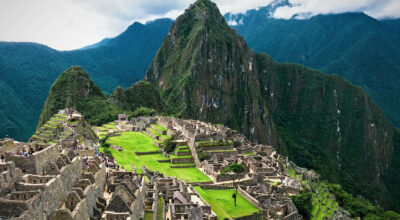Shuklaphanta National Park :Small Area With Many Tigers

Shuklaphanta National Park
Shuklaphanta National Park in Bhimdatta Municipality of Kanchanpur was established as a hunting reserve in 2026 BS and was declared as Shuklaphanta Wildlife Sanctuary in 2032 BS covering an area of 155 sq km. In 2036 BS, the area of 150 sq km east of the reserve was expanded to 305 sq km.Shuklaphanta Wildlife Reserve has been declared as Shuklaphanta National Park on March 26, 2010. Shuklaphanta falls at an altitude of 174 meters to 1386 meters. The park is also known as the site of the world’s largest herd of rhinos. The park is famous for its rare wildlife, birds and flora.
Shuklaphanta National Park, a major tourist destination in the far-western region, is home to the world’s largest herd of deer, which attracts tourists.Shuklaphanta National Park is one of the most protected species in the Terai of Nepal. Although it is small in terms of area and area, it is home to rare wildlife and birds.

Although Shuklaphanta National Park is an attractive destination for tourists, it has been overshadowed by publicity and geographical remoteness. According to the park office, the number of Nepali tourists has increased but the number of foreign tourists has decreased. Although there are other tourist areas including Shuklaphanta in Kanchanpur district, there has been no publicity.
Foreign tourists coming through Gaddachauki have also left their tourist destinations and gone directly to Pokhara and Kathmandu. The number of tourists in Shuklaphanta has not increased due to publicity and geographical remoteness.There are no hotels nearby, there is a lack of infrastructure and there is also a lack of publicity.The tourism businessmen here also stressed on the need to make a definite package. Stating that there is a possibility of attracting Indian tourists, he said that Gaddachauki should be opened for 12 hours.
Despite being a beautiful place in the far west, Shuklaphanta has not become a tourist destination. Although the park has opened its entrance to the southern region, it has not been effective. The natural lakes within the park are also drying up. Local traders have complained that the Shuklaphanta National Park has not been able to protect and publicize the lake. The park office has stated that an artificial lake is being constructed to quench the thirst of the wildlife after the natural lake started drying up. A budget of Rs 12 million has been allocated for this.

The park is working to clean the lake and increase the water level this year. For which the office has already given a contract for Rs 2 million.
Chairman of the Kanchanpur Chamber of Commerce and Industry Jung Bahadur Malla said that despite the huge potential for tourism in Kanchanpur, no concrete initiative has been taken at the state level for the promotion of tourism. He said, “The entrance fee should be lower than other parks.
There is only one entrance in Shuklaphanta with an area of 305 sq km. The entrance and exit gates should be increased. ”
The closure of Mazgaon Airport near Shuklaphanta National Park has also hampered economic development and tourism business. As foreign tourists come to visit Nepal for a certain period of time, it is not possible to visit all the places in a short time due to its geographical remoteness. For which it is necessary to operate Mazgaun Airport.
The Shuklaphanta National Park Office could not provide publicity.It has been found that the foreign tourists entering from Gaddachauki at the western border are not aware of the tourist areas here. Although the office of the Nepal Tourism Board is in Gaddachauki, the office has been dependent on assistants for the past four years. There are complaints that the board has not been able to work effectively.

According to the 2018 census, there are 16 tigers in Shuklaphanta National Park. According to the park office, there are four indigenous elephants in the park, though there are 40-50 herds of seasonal elephants. According to the 2017 census, there are 17 rhinos in the park, according to the 2014 census, there are 2301 rhinos and 74 black rhinos.
There are 12 species of reptiles in Shuklaphanta National Park. According to the park office, there are 20 species of amphibians, 24 species of fish, 35 species of butterflies, 80-90 swallows and 424 species of birds as per the 2013 census. Wildlife such as storks, kharamjur, sim titra, rajdhesh and laser bhudifor, which are considered rare in the world, are also found in Shuklaphanta.
There are more than 53 species of mammals. Among them are Patebagh, Eksinghe Gaida, Hatti Bahrasinga, Krishnasara, Salak, Nilgai, Chituwa Chital, Laguna, Ratuwa, Hispeed Rabbit, Badel etc.According to the statistics of Shuklaphanta National Park, 4,740 Nepali, 183 SAARC and 266 foreign tourists have visited Shuklaphanta in the last fiscal year.

There is a challenge in wildlife conservation as there is a human settlement around Shuklaphanta National Park. the office conducts public awareness programs and from time to time conducts trainings and seminars at the local level for the conservation of wildlife. Due to the human settlements around the park, there is a conflict between wildlife and humans, which has made wildlife conservation challenging.
Small area, many tigers

On the west side of the huge grassland within Shuklaphanta National Park, along with a beautiful view of the sunset, one can easily see a herd of rhinos.
Spread over an area of 55 square kilometers, it is the largest grassland in the country. The palm trees around the grassland have become Pahelpur at this time. The flowers of Palans enchant anyone who comes to visit Shuklaphanta Park.A herd of more than 2,300 rhinos can be seen in the meadow. There are 17 adult tigers in the park along with the deer. Due to these, internal and external tourists have been attracted. Due to the natural beauty of the park, various wildlife and different species of birds, the number of tourists visiting the park is increasing every year.

Recently, Shuklaphanta Wildlife Sanctuary has been upgraded to a national park. Apart from the twelve horns, Shuklaphanta is famous for its tigers. “Shuklaphanta is a park with a lot of tigers in a small area ,The number of tigers is on the rise.”
There are many tigers in a small area due to proper management of food and habitat. In 2017, 17 tigers were found in Shuklaphanta. Recently, the Department of National Parks and Wildlife has conducted a tiger census. The department has counted the tigers for 19 days from January 7. Tigers were first counted here in 2009. At that time, there were only eight adult tigers.Tigers are more likely to be seen in Babatal, Ranital, Lalpani and Shuklaphanta areas of the park .There are 424 species of birds and 17 unicorns. There are seven domesticated elephants. There are 64 black manure in the Arjuniphanta area of the park. In 2010, Krishnasara was transferred here from Banke and Bardiya. The largest herd of rhinos in the world can be seen in this park. There are more than 20 wild elephants here .
FAQ’S
Where is Suklaphanta lies?
Is there is Tiger here in Sukhlaphanta?
How to reach Suklaphnata Willife reserve?






